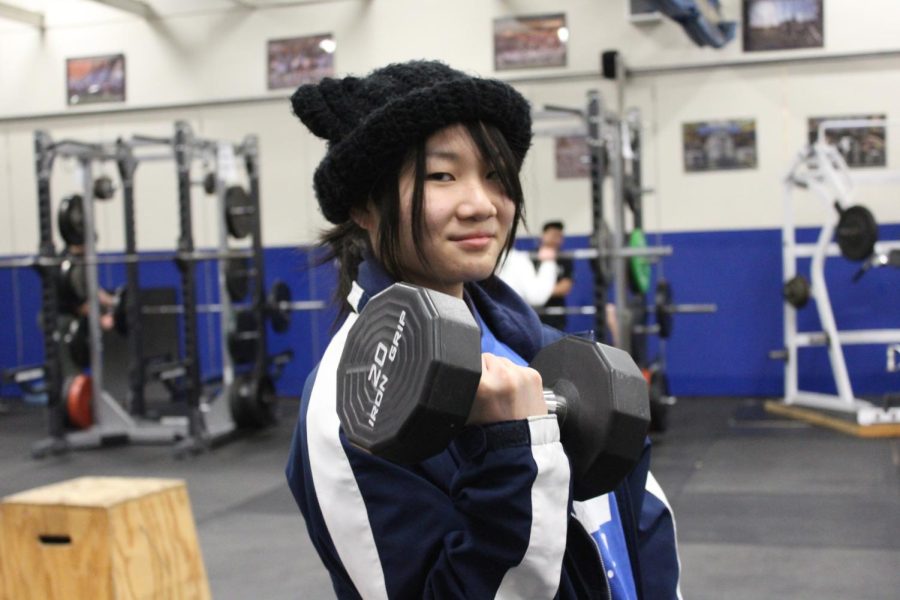Breaking down gendered classes
Photo by Tessa Fabsik
Liang lifts a dumbbell in the weight room. Liang says that her favorite part of weight training is the ability to fit the course to her needs.
With over 100 different course offerings at LZHS, students a choice over the classes they take. However, preconceived ideas of gender norms might guide some students’ course selection.
Weight Training
Weight training focuses on teaching students how to properly handle and use weights. This class has a majority male student base, according to Roxanne Liang, a senior who took weight training. Liang said that in her class there were only two or three other girls.
“I just feel [that] weight training culture, in a sense, in this school is overwhelmingly boys,” Liang said.
Aaron Towne, weight training teacher, attributes the higher number of males in the class to sports, since male dominated sports such as football and wrestling recommend weight training to their athletes.
Towne also says that confidence might play a role in the overwhelming male number of boys in weight training.
“I use the word confident a lot. When you’re in the strength training class, you have to be confident in this weight because it could hurt, you [have] to feel confident in doing certain movements. So I think it’s kind of a confidence issue, whether you’re male [or] female but I would probably say females more,” Towne said.
Overall Towne says that he doesn’t think the gender discrepancies matter because weight training is a very “individual based class.” But, Towne does see value in everyone taking his class.
“Everybody can benefit from weight training. If you look at American society right now, we’re not very fit. I want male[s] and female[s] to be up in the weight room all the time,” Towne said.
Liang also encourages more females to take the weight training course.
“I think it’d be cool to have a larger girl weight training population,” Liang said. “It’s just cool to see girls wanting to get buff.”
FACS
The FACs department includes culinary arts, child development, and fashion classes. Carolina Wrocenski, fashion and culinary arts teacher, says that throughout the department there are different amounts of gender diversity.
“Classes like culinary [are] very, very mixed. Even classes like adult living [and] single survival. Those are all very mixed classes. If we looked at more like fashion and child development, sometimes they skew more towards one gender than another. But it’s not like we felt like we only have one gender in a class,” Wrocenski said.
Wrocenski says that she thinks that gender variety in her classes doesn’t matter as long as everyone is interested in the class, especially since FACS classes are electives. Even though child development is a female dominated class, Nicole Sharratt, FACS teacher, says the boys don’t seem to mind the gender discrepancies either.
“The [boys] that do take child development end up loving it and they’re in it repeatedly because they want to work with the kids,” Sharratt said.
Casper Gilbert, freshman, says he has had a good experience as one of two boys in his fashion class.
“I felt pretty comfortable. Everyone was super nice and it was a nice environment for me,” Gilbert said.
Both Wrocenski and Sharratt agreed that the skills and benefits of taking a FACS class are important to all genders.
“No matter what career they want to go into, these [skills] are all [things] that you need to know how to do at home. If you plan on starting a family you need to know the best way is to raise [your children] and [things] like that. Everyone eats so you need to learn how to cook your food. Even with fashion, a lot of people don’t know the basics of just threading a needle or sewing on a button,” Wrocenski said. “So those skills can be used no matter what.”

This is Tessa’s second year on staff and first year as Bear Facts' Junior Sports Editor. Tessa spends most of her free time playing tennis or soccer....

